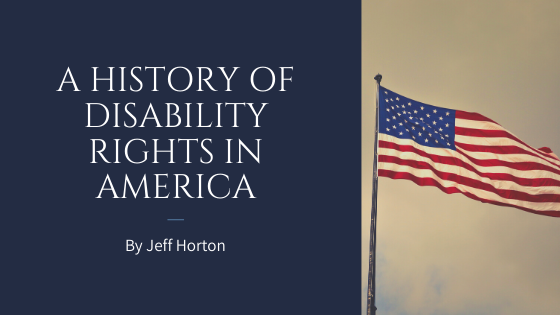For a long time, people living with disabilities were extremely marginalized. In the 1800s, a person living with a disability was considered unfit and unable to make a meaningful contribution to society. In a way that many had thought was merciful, people with disabilities were kept hidden. For decades, people with disabilities were forced into institutions, asylums, and were treated as invisible by society. This continued for decades.
It wasn’t until World War I that a change in mindset began to occur. Veterans returning home with disabilities demanded proper rehabilitation from the US government in exchange for their service to the country. Then, in 1930, new advancements were made in technology and government assistance that allowed people with disabilities to be more self-sufficient and self-reliant.
Around the same time, Franklin D. Roosevelt became the 32nd President of the United States. For over ten years, then President Roosevelt had been living with what was believed to be polio. By the time he was elected President, Roosevelt’s legs were paralyzed, leaving him unable to walk unaided. After his fourth term elected as President, it was evident the contribution he had made to his country, and therefore, it was evident that all people, regardless of disability, could make a meaningful contribution to society.
World War II ushered in new advocates for people living with disabilities as veterans applied further pressure on the government for vocational training and disability issues. Despite the advancements veterans and thankful citizens helped create in the 40s and 50s, there were still several barriers for people living with disabilities to access opportunities for meaningful work.
When the civil rights movement began to take shape in the 1960s, disability advocates saw strength in numbers and decided to join other minority groups in the demand for equal opportunities, equal access, and equal treatment. By 1973, Congress had passed the 1972 Rehabilitation Act, which, for the first time provided legal protection for people with disabilities. Section 504 of the Rehabilitation Act required equal footing as a class under the law, meaning the government provided federally funded programs and prohibited the discrimination of physical or mental disabilities. However, Section 504 didn’t extend to the private sector, leaving many people with disabilities disadvantaged and left behind.
1975 saw the Education for All Handicapped Children Act pass through Congress. This mandated equal access and full inclusion to public education for children with disabilities. In 1990, this act was renamed to the Individuals with Disabilities Education Act (IDEA). This new bill integrated the rights of parents to be involved in educational decisions with provided parental approval on educational needs, as well as furthered on the inclusion of children with disabilities into regular classrooms.
The Americans with Disabilities Act (ADA) was also passed in 1990 which sought to ensure access and equal treatment of people with disabilities to public accommodations and employment opportunities.
The promise that ADA offers is yet to be fully realized. People with disabilities still battle deep-rooted assumptions and stereotypes. However, the disability rights movement continually strives towards the self-determination and empowerment of Americans with disabilities.

